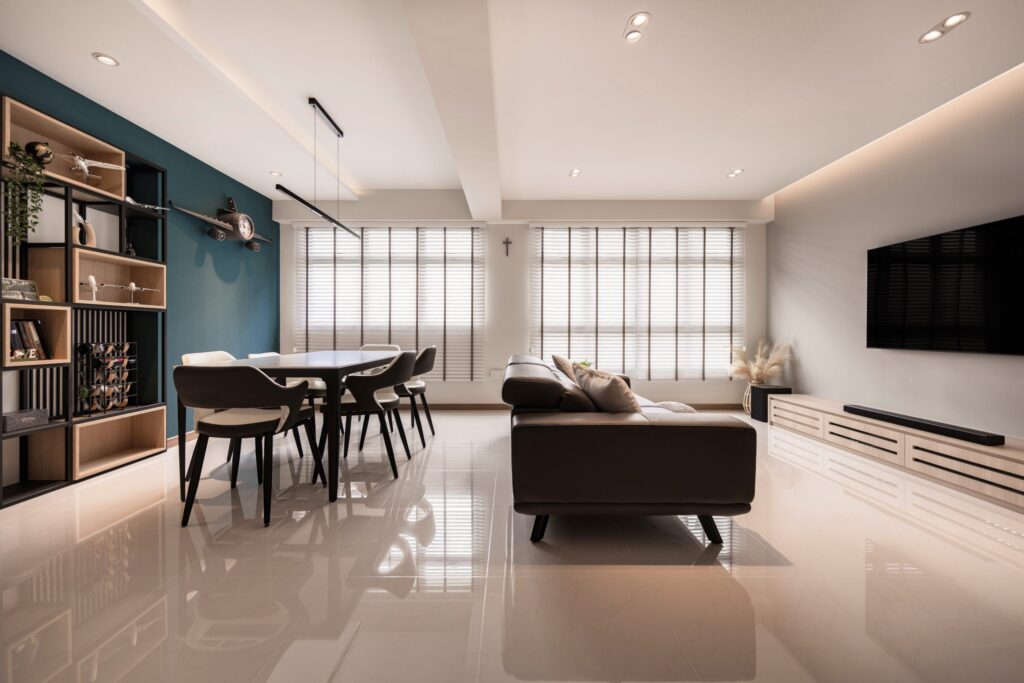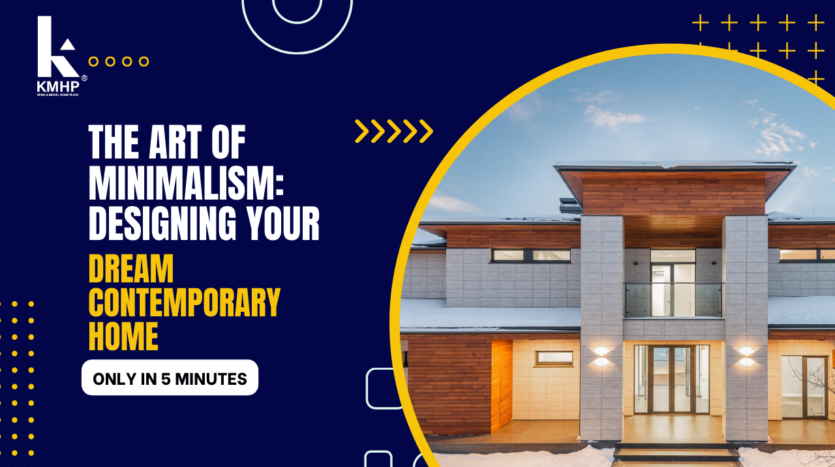Introduction
In a world overflowing with distractions and clutter, the concept of minimalism has gained tremendous popularity. Minimalism is more than just a design trend; it’s a way of life that promotes simplicity, functionality, and tranquility. This article explores the art of minimalism and how to design your dream contemporary home that embodies this elegant and clutter-free style.
What is Minimalism?
Minimalism is a design philosophy that focuses on simplicity, functionality, and the removal of excess. It’s about creating a space that is clean, uncluttered, and visually pleasing. Here’s how you can incorporate minimalism into your home design:
Embracing Functional Simplicity

Minimalism doesn’t mean sacrificing functionality; it’s about finding balance. Start by decluttering your space and getting rid of items that no longer serve a purpose. Keep only what you need and what brings you joy.
Decluttering Your Space
Minimalism begins with decluttering. Take a critical look at your possessions and ask yourself if they are essential. Donate or sell items that no longer serve a purpose in your life. Keep only those that add value and beauty to your home.
Choosing Neutral Colors
Neutral color palettes, such as whites, grays, and muted tones, are key to minimalist design. They create a sense of tranquility and make your space feel open and airy.
Streamlined Furniture
Select furniture that is both functional and visually appealing. Opt for pieces with clean lines and a simple design. Avoid bulky or ornate furniture that can overwhelm your space.
Creating an Open Layout

An open layout is a hallmark of contemporary minimalist design. It allows for better flow and maximizes the use of space.
Open Concept Living
Combine your living, dining, and kitchen areas into one open space. This not only creates a sense of spaciousness but also encourages interaction and connectivity within your home.
Minimalist Decor
When it comes to decor, less is more in a minimalist home. Choose a few statement pieces that reflect your style and personality. Avoid cluttering your space with too many decorations.
Maximizing Natural Light

Natural light is a fundamental element of minimalism. It not only reduces the need for artificial lighting but also creates a warm and inviting atmosphere.
Large Windows
Install large windows that allow ample natural light to flood your home. Consider floor-to-ceiling windows or sliding glass doors that connect your indoor and outdoor spaces.
Window Treatments
Opt for simple and unobtrusive window treatments. Sheer curtains or blinds can provide privacy without obstructing the view or the incoming light.
Minimalist Kitchen and Bathrooms

The kitchen and bathrooms are essential areas of any home. In a minimalist design, these spaces should be both functional and aesthetically pleasing.
Clean and Clutter-Free Countertops
Keep your countertops clear of unnecessary appliances and clutter. Store items in cabinets and drawers to maintain a clean and tidy appearance.
Sleek and Modern Fixtures
Choose modern fixtures and fittings with clean lines and a minimalist aesthetic. This applies to faucets, handles, and even lighting.
Sustainable Materials
Minimalism often aligns with sustainability. Consider using eco-friendly and durable materials in your home design.
Bamboo Flooring
Bamboo is a sustainable and durable flooring option that complements a minimalist aesthetic. It’s also easy to maintain.
Recycled and Upcycled Furniture
Consider using furniture made from recycled or upcycled materials. This not only reduces waste but also adds a unique touch to your home.
Conclusion
Designing your dream contemporary home with a minimalist approach can transform your living space into a serene and functional haven. By embracing functional simplicity, creating an open layout, maximizing natural light, and choosing sustainable materials, you can create a home that reflects your values and provides a sense of calm in today’s fast-paced world.
FAQs
1. Is minimalism only about aesthetics?
No, minimalism is not just about aesthetics. While it does emphasize clean and simple design, it also promotes functionality and reducing excess in all aspects of life.
2. Can I incorporate color in a minimalist home?
Yes, you can use color in a minimalist home, but it’s best to stick to a limited color palette, focusing on neutrals with occasional pops of color for accent pieces.
3. Is minimalism suitable for families with children?
Yes, minimalism can work for families with children. It encourages organization and simplification, which can make family life more manageable.
4. How can I maintain a minimalist home over time?
Regular decluttering and a mindful approach to new purchases are key to maintaining a minimalist home. Stay conscious of what you bring into your space.
5. Can I combine minimalism with other design styles?
Yes, minimalism can be combined with other design styles like Scandinavian or industrial, allowing you to create a unique and personalized home that suits your taste.
- Mein Schweizer Online-casino - June 30, 2025
- Best Online Casinos Australia 2024: Best Au Casino Websites For Real Money - June 30, 2025
- Exploring the Risks of Betting Utan Licens: A Comprehensive Guide - June 29, 2025





